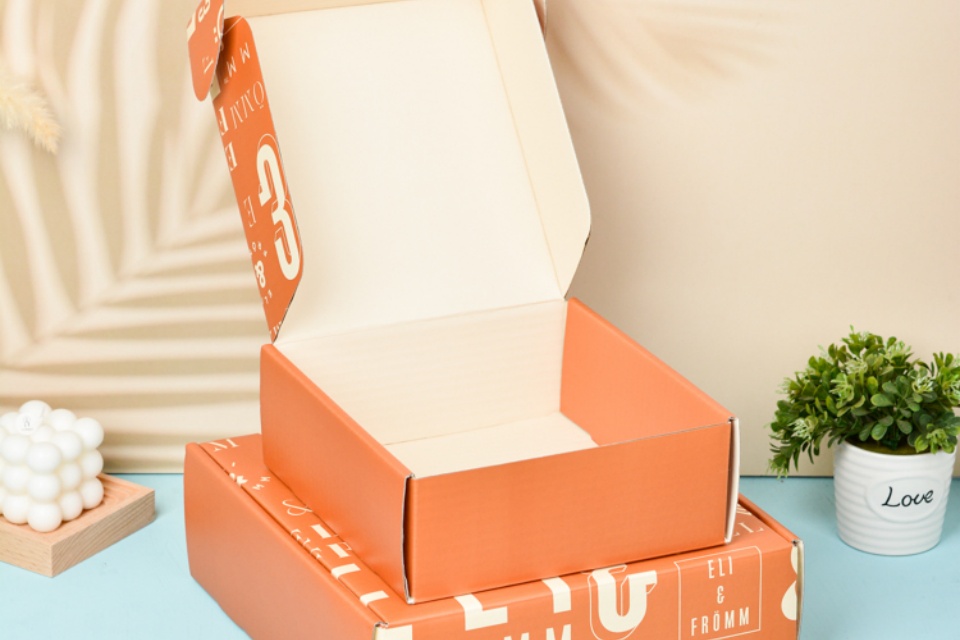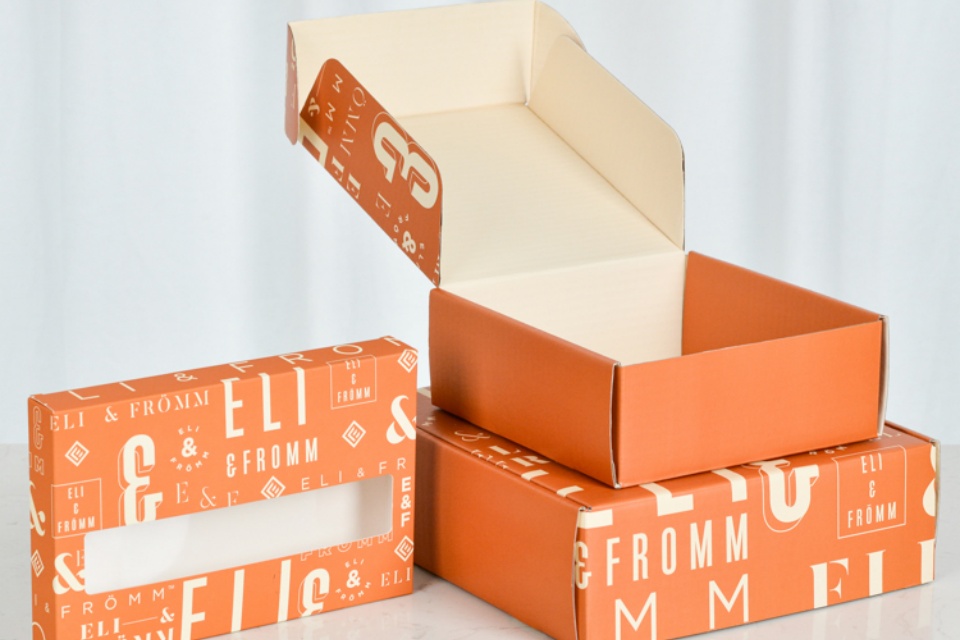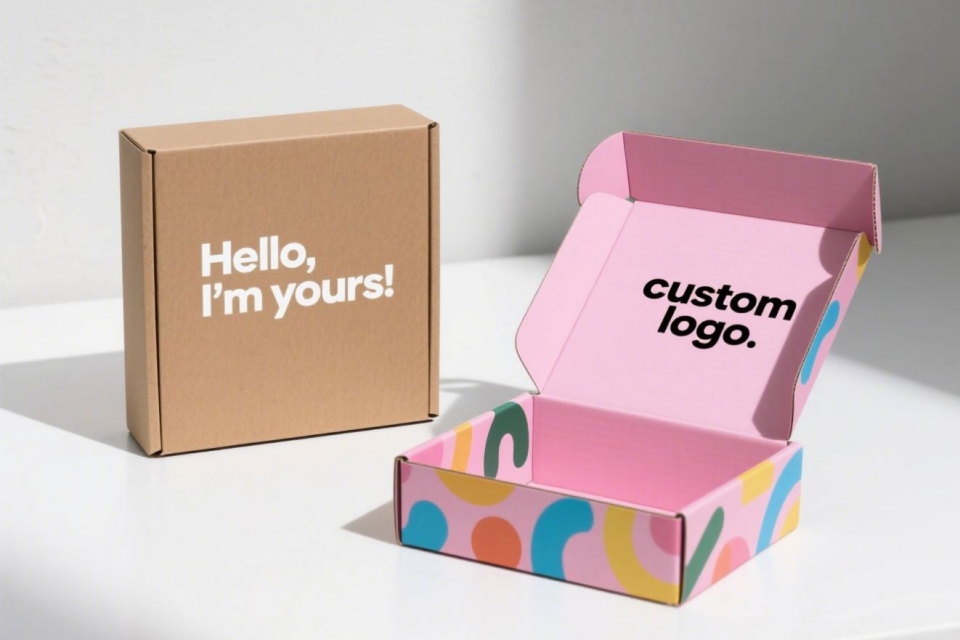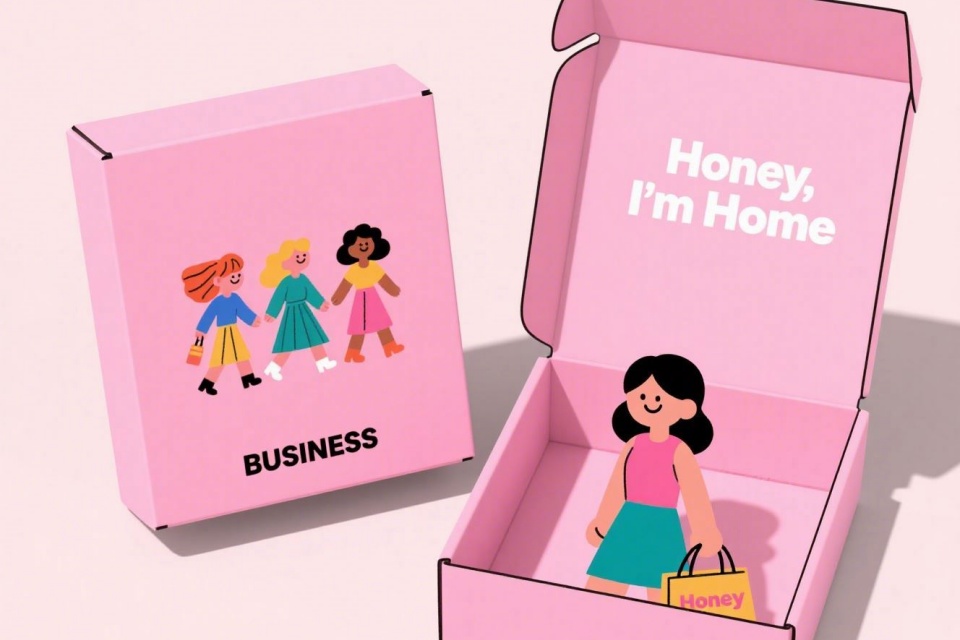What Are Mailer Boxes( Die-Cut Shipping Boxes)?
Explore the world of die-cut mailer boxes. This blog covers their history, design, sustainable benefits, and vital role in modern e-commerce packaging.
Summary
Mailer boxes, specifically die-cut shipping boxes, are specialized packaging solutions designed for the efficient and secure transport of goods. Originating from the evolution of paper and cardboard materials over centuries, these boxes have gained prominence in contemporary logistics, particularly in the context of the booming e-commerce industry. Their ability to be customized through die-cutting techniques allows businesses to create unique shapes and sizes that not only protect products during transit but also enhance brand visibility and consumer experience.
The notable rise in the use of mailer boxes can be attributed to the increasing demand for sustainable packaging solutions that minimize environmental impact. Made from recyclable and biodegradable materials, these boxes are positioned as eco-friendly alternatives to traditional plastic packaging, addressing consumer concerns about waste and pollution. Many companies now prioritize sustainability in their packaging choices, which has led to innovations in the design and manufacturing processes of die-cut boxes, such as the use of recycled cardboard and efficient production techniques.
Despite their advantages, the adoption of mailer boxes is not without controversy. Critics argue that while they may offer environmental benefits over single-use plastics, the overall impact of cardboard production, including deforestation and resource consumption, should not be overlooked. Moreover, the variability in material quality and the potential for over-packaging have raised questions about the long-term sustainability of these packaging solutions. As the industry continues to evolve, balancing functionality, cost, and environmental stewardship remains a key challenge for manufacturers and consumers alike.
In summary, mailer boxes and die-cut shipping boxes represent a significant advancement in packaging technology, combining durability, customization, and sustainability. As e-commerce continues to thrive and environmental awareness grows, the future of these packaging solutions will likely depend on ongoing innovation and a commitment to minimizing ecological footprints while meeting market demands.
Table of Contents
History
The history of mailer boxes and die-cut shipping boxes is rooted in the ancient invention of paper, which originated in China around 206-220 AD during the Han Dynasty. Cai Lun developed a pulping process that laid the foundation for modern cardboard production by mixing tree bark, hemp, cloth, and plant fibers with water. Over the centuries, the use of paper for packaging evolved, spreading through Japan and the Islamic world to Europe.
The first plain paperboard boxes, reminiscent of contemporary breakfast cereal boxes, appeared in England in the early 1800s. Notably, in 1856, Edward Allen and Edward Healey pioneered the creation of corrugated paper, originally intended for lining men’s hats to provide stability and warmth. This innovation eventually led to the use of corrugated material in shipping. In the United States, Albert Jones adopted this technology in 1871, using it to protect glassware during transport, and Oliver Long improved upon his design in 1874 by adding liner sheets on both sides, creating a precursor to the modern cardboard box.
Custom printed cardboard boxes emerged in the mid-1800s, with Kellogg’s being the first company to utilize lightweight cardboard boxes for packaging their flaked cereals. This marked a significant advancement in the evolution of packaging materials, aligning with the growing demands of the retail market.
In contemporary times, the significance of shipping boxes has surged, particularly with the rise of e-commerce. The flexibility and customization of die-cut shipping boxes, which are produced using die cutting techniques that allow for precision in shaping cardboard sheets, have made them essential for businesses aiming to enhance their brand value while ensuring product safety during shipping. The ideal shipping box today balances durability and economy, employing materials like Kraft paper and corrugated construction to meet the challenges of modern logistics.

Design
Overview of Mailer Box Design
The design process for mailer boxes, particularly die-cut shipping boxes, involves several critical steps that ensure the final product meets both functional and aesthetic requirements. Initially, packaging engineers and designers assess project-specific needs, such as cost constraints, machinery capabilities, product characteristics, logistics, and consumer demands. This comprehensive approach allows for a tailored design that not only protects the product but also enhances the brand’s presentation.
Materials Selection
Choosing the right materials is essential in the design of mailer boxes. Designers often opt for materials that strike a balance between sustainability, performance, and cost-effectiveness. Options such as recycled cardboard, biodegradable packaging solutions, and compostable films are prioritized to minimize environmental impact while ensuring adequate protection for the products being shipped. Furthermore, the materials selected play a significant role in the overall look and feel of the packaging, contributing to the brand’s image.
Structural and Graphic Design
The structural design of a mailer box is paired with graphic design to create a cohesive and appealing package. Designers utilize Computer Aided Design (CAD) software to create structural layouts that can be effectively manufactured. This stage often includes developing die lines, which are templates for cutting the boxes, ensuring that they can be produced efficiently without compromising quality. Additionally, graphic elements such as branding and color schemes are integrated to enhance visual appeal and consumer recognition.
Sustainability and Efficiency
Sustainable design practices have become increasingly important in mailer box creation. Optimizing designs to use fewer materials and right-sizing boxes are common strategies that not only reduce waste but also lower shipping costs and carbon emissions. Moreover, advancements in technology, such as data analytics and 3D printing, allow for rapid adjustments in design, facilitating eco-friendly practices.
Unique Features and Customization
Mailer boxes can feature unique designs that include custom shapes, die-cut windows, and branding options that enhance the customer experience and differentiate products in the marketplace. This level of customization allows businesses to create memorable unboxing experiences that align with their brand identity and appeal to their target audience. Options for various finishes, sizes, and printing techniques further provide flexibility in creating a distinctive package.

Manufacturing Process
The manufacturing process of die-cut shipping boxes involves several critical steps that ensure precision, efficiency, and sustainability in packaging solutions.
Die-Cutting Process
At the heart of the manufacturing process is die cutting, which employs a specialized tool known as a cutting die to shape cardboard into specific designs and forms. This process can be likened to cookie cutting, where the die serves as a template to create uniform shapes from the cardboard, which acts as the dough. The cutting die is typically made of sharp steel blades that accurately cut, score, and mold the material into bespoke shapes suitable for packaging.
Material Selection
The initial phase of manufacturing die-cut boxes begins with the selection of appropriate materials. Manufacturers often utilize paper-based materials sourced from suppliers that adhere to global environmental standards such as the Forest Stewardship Council (FSC®) and the Sustainable Forestry Initiative (SFI®). This commitment to sourcing eco-friendly materials is a vital aspect of sustainable packaging practices.
Design and Production
The process continues with the design phase, where a die maker translates the desired shape into a digital file using specialized software. This file acts as a blueprint for the die-cutting machine. Once the design is finalized, the die is produced, ensuring durability and accuracy through rigorous quality checks.
Automation and Efficiency
Automation plays a significant role in enhancing the sustainability and efficiency of the die-cutting process. Automated systems help optimize material usage by accurately measuring requirements, thus minimizing waste and reducing the overall carbon footprint of the manufacturing process. This streamlined approach not only lowers production costs but also supports the use of eco-friendly materials more effectively.
Customization and Quality Control
The die-cutting process also allows for customization, enabling businesses to create boxes with unique designs, intricate patterns, or perforations that enhance visual appeal and brand identity. Following production, rigorous quality control measures ensure that each box meets the necessary standards for accuracy and durability, making them suitable for various applications in shipping and retail.
By integrating these meticulous steps in the manufacturing process, die-cut shipping boxes not only meet logistical requirements but also contribute to sustainable practices in the packaging industry, catering to the growing demand for environmentally responsible solutions.

Advantages
Mailer boxes, particularly die-cut shipping boxes, offer numerous advantages that make them a popular choice for businesses looking to balance functionality with sustainability.
Environmental Impact
Mailer boxes, particularly those made from sustainable materials, play a significant role in reducing environmental harm associated with traditional packaging. The use of eco-friendly packaging materials can greatly diminish carbon footprints and reduce waste, contributing positively to the environment.
Benefits of Sustainable Packaging
One of the primary advantages of sustainable packaging, including mailer boxes, is their biodegradability. Biodegradable materials are designed to break down naturally over time, which minimizes pollution and environmental damage compared to conventional plastics that can take hundreds of years to decompose. By adopting biodegradable mailer boxes, companies can enrich the soil instead of contributing to landfill waste, thereby supporting broader environmental goals such as reducing reliance on fossil fuels and lowering carbon emissions during production.
Moreover, the shift towards recyclable and compostable materials in mailer boxes aligns with consumer preferences for environmentally responsible products. Consumers are increasingly drawn to brands that prioritize sustainability, creating a market where eco-friendly packaging enhances brand reputation and loyalty. This growing consumer demand is not only a driver for businesses to adopt sustainable practices but also influences regulatory changes that encourage accountability throughout the packaging lifecycle.
Addressing Pollution and Wildlife Protection
Green packaging, including die-cut shipping boxes, helps combat plastic waste—a significant contributor to pollution in oceans and landfills. By utilizing materials that are recyclable or biodegradable, mailer boxes prevent toxic chemicals from leaching into the environment, which can have detrimental effects on wildlife and ecosystems. This proactive approach to packaging reduces the overall environmental impact, protecting wildlife and conserving resources.
Innovations in Sustainable Packaging
The development of innovative packaging technologies, such as bioplastics derived from renewable sources, further enhances the environmental benefits of mailer boxes. These materials not only address the consumer demand for sustainable options but also contribute to the reduction of plastic waste in landfills. Companies that incorporate smart packaging technologies can improve supply chain efficiency while minimizing waste, reinforcing their commitment to sustainability.
Cost Efficiency
Although sustainable packaging solutions may have higher initial costs, they often lead to significant long-term savings. For example, while an eco-friendly mailer box might cost around £0.59 per unit, it can reduce a company’s carbon footprint by up to 12% compared to conventional alternatives. Furthermore, as regulatory measures like the plastic packaging tax come into effect, businesses may find that investing in sustainable packaging becomes more economically viable over time.
Protection and Durability
Die-cut boxes are designed with durability in mind, providing excellent protection for products during transportation. They are specifically engineered to minimize movement, reducing the risk of damage and ensuring that items arrive at their destination in pristine condition. This level of protection is critical for maintaining product integrity and customer satisfaction.
Market Differentiation and Innovation
Implementing die-cut mailer boxes can also serve as a powerful tool for market differentiation. Companies that utilize innovative packaging solutions can stand out in a crowded marketplace, appealing to consumers who prioritize sustainability. By integrating storytelling and transparency about their packaging choices, businesses can foster stronger connections with their audience, enhancing brand loyalty and engagement.
Reusable Packaging Opportunities
Additionally, die-cut boxes can be designed to support reuse, contributing to a circular economy model. Encouraging customers to return and reuse packaging can further minimize waste while offering brands a competitive edge. By incorporating advanced intelligence in packaging design, companies can optimize material usage and enhance overall efficiency, leading to improved operational outcomes.

Applications
Mailer boxes and die-cut shipping boxes have become essential tools across various industries, particularly with the growth of e-commerce and the increasing emphasis on sustainability in packaging solutions. These boxes are utilized for their ability to protect products during transit while also providing an aesthetically pleasing presentation for customers.
Food and Beverage Industry
The food and beverage industry is at the forefront of utilizing custom mailer boxes and die-cut shipping boxes. These packaging solutions not only ensure the freshness and safety of products but also meet consumer demands for convenience and sustainability. With the rise in packaged and ready-to-eat foods, brands in this sector are increasingly investing in specialized packaging to differentiate their offerings in a competitive market. Biodegradable and recyclable materials are often used, aligning with the growing consumer interest in eco-friendly products.
E-commerce Packaging Solutions
The e-commerce sector has significantly influenced the demand for innovative packaging solutions. Mailer boxes are designed to cater to the needs of online retailers by ensuring that products are delivered safely and securely. As e-commerce sales continue to rise, particularly with consumers’ preference for online shopping, the packaging industry is tasked with developing robust shipping boxes that can withstand the rigors of delivery while maintaining a strong visual appeal. Companies like EcoPackables are leading the charge by offering sustainable, compostable, and customizable options for e-commerce packaging.
Cosmetics and Personal Care
The cosmetics industry is also embracing biodegradable packaging solutions, incorporating materials such as plant-based plastics into their mailer boxes. This shift is driven by consumer concerns regarding plastic pollution and the industry’s need to present a sustainable image. Companies that adopt these eco-friendly practices not only meet customer expectations but also contribute to broader environmental goals, showcasing their commitment to sustainability.
Logistics and Supply Chain Management
In logistics, the design of mailer boxes must consider various factors including cost constraints, product characteristics, and regulatory requirements. Packaging engineers employ Computer Aided Design (CAD) programs to create structural layouts that optimize material use while ensuring product safety during shipping. This attention to detail not only enhances operational efficiency but also supports sustainability initiatives by minimizing waste and encouraging the use of recyclable materials.

Comparison with Other Packaging Types
Mailer boxes and die-cut shipping boxes have gained popularity in the packaging industry due to their efficiency and eco-friendliness. When compared to traditional packaging types, these modern solutions offer distinct advantages.
Advantages of Mailer Boxes
Mailer boxes are specifically designed for shipping, providing enhanced protection during transit. Their padded structure often includes bubble wrap or foam layers, which absorb shocks and impacts, making them suitable for delicate items such as electronics and jewelry. Furthermore, mailer boxes are typically made from recyclable materials, contributing to sustainability efforts by reducing waste in landfills and promoting the circular economy.
In contrast, traditional packaging materials like plastic and Styrofoam are being phased out in favor of more sustainable options. Many companies are moving towards alternatives like recycled paper and corrugated cardboard, which are both biodegradable and recyclable. This shift aligns with growing consumer demand for eco-friendly products, further establishing mailer boxes as a favorable choice.
Cost Efficiency
Mailer boxes also present a cost-effective solution compared to traditional packaging options. They eliminate the need for multiple packaging materials, streamlining the packaging process and reducing overall expenses. Additionally, the ability to customize die-cut boxes allows businesses to create tailored solutions that meet specific shipping needs, improving both aesthetics and functionality.
Sustainability Comparison
When evaluating the environmental impact, mailer boxes excel in several areas. They reduce reliance on fossil fuels, as they can be produced using renewable resources, unlike many plastic-based materials. Furthermore, the emphasis on minimalism in packaging design helps conserve natural resources by utilizing fewer materials. This is in stark contrast to conventional packaging, which often involves excessive use of plastics that contribute to pollution and climate change.
Moreover, mailer boxes often come in various sizes and styles, allowing businesses to choose options that minimize material use and waste during shipping. The adaptability of these boxes enhances their appeal in a market increasingly focused on sustainability.
